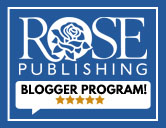Intro to Kindle Formatting for Non-Technical Publishing Staff: 10 Things that Surprised Us

For non-technical staff in editorial and marketing departments, here are some basics you should know. If you are an experienced Kindle user or formatter, skip this blog post. Rose Publishing is not affiliated with Kindle.
Kindle is one of many ebook readers on the market. It is sold by Amazon.com.
- Kindle has very limited graphics capability. Images can easily be put above or below type, but not next to it.
- Kindle cannot do tables (aka charts) and keep the information in the side-by-side columns live (clickable and searchable) without considerable effort.
- Kindle doesn’t have clearly discernible page numbers or line numbers. So you’ll have to do a link to a specific place elsewhere in your book.
- Kindle can enlarge graphics a little.
- Kindle is black and white right now; full color on the iPhone or iPod Touch. Make sure that your formatting service renders all color images in color even though you won’t see them on a Kindle as of 2009.
- If you read the reviews, you’ll notice that many Kindle editions have copy errors. Be sure to proofread, even if you gave your formatting service a PDF.
- When converting to Kindle formatting, it is remarkable that a PDF isn’t foolproof. We found more than 20 typographical errors and even two spelling errors in our first draft that did not exist in the PDF.
- When a Kindle user selects “Go to the Beginning,” the ebook “opens” to the first page of text (not to the cover or the title page or the copyright page). So if you have key information on covers or title page or copyright page, you may want to repeat this information in the first chapter or elsewhere in the book. Or simply discuss with your formatting service the advisability of adding the covers and other pages in the body content.
- Many Kindle editions don’t include the back cover. So if you have vital information there about the author or cross-selling, duplicate it somewhere in the text. Since Kindle ignores page numbering, you can easily “add” a page to your PDF before sending it to the formatter in order to add info found on front, back, or copyright pages. You can also add a study guide in the Kindle edition that wasn’t printed in the physical edition.
- Websites mentioned in a Kindle edition are clickable and Kindle can go to the Internet.
These are our first impressions of formatting peculiarities. We’ll post more as we go…
If you have advice on Kindle conversion, please comment below.


